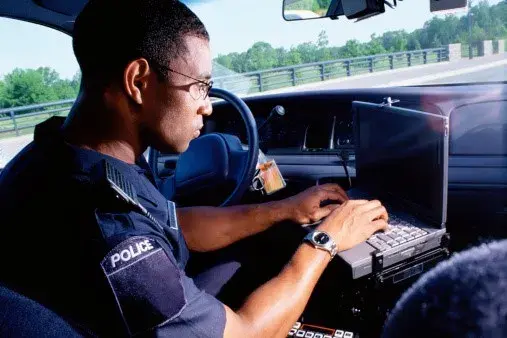 To support S&T’s mission to provide DHS Components, including first responders, with the tools and technologies they need, the Voice, Video, and Data Portfolio was established to address how first responders send and receive information. Currently, the majority of communications occurs via land mobile radio (LMR), which has a short communication range and is on commercial cellular networks vulnerable infrastructure. S&T aims to identify capability gaps and develop innovative solutions that provide first responders with the tools, technologies, methodologies, and guidance they need to enable improved communications interoperability during the most pressing challenges they face during day-to-day and large-scale emergencies.
To support S&T’s mission to provide DHS Components, including first responders, with the tools and technologies they need, the Voice, Video, and Data Portfolio was established to address how first responders send and receive information. Currently, the majority of communications occurs via land mobile radio (LMR), which has a short communication range and is on commercial cellular networks vulnerable infrastructure. S&T aims to identify capability gaps and develop innovative solutions that provide first responders with the tools, technologies, methodologies, and guidance they need to enable improved communications interoperability during the most pressing challenges they face during day-to-day and large-scale emergencies.
First responders are often in critical situations where a hands-free voice interface solution could enhance their situational awareness and help ensure their safety. As part of its mission to support the identification and integration of existing and emerging technologies, the Department of Homeland Security Science and Technology Directorate (S&T) has partnered with the Johns Hopkins University Applied Physics Laboratory (JHU/APL) to develop potential Automated Speech Recognition (ASR) technology solutions.
S&T and the Public Safety Communications Research (PSCR) team are exploring methods for assessing the use of multi-standalone Deployable System (DS) solutions, where a deployable system is defined by a system that is transportable, self-contained, provides users with broadband services, and can interconnect with other deployable systems wirelessly. The deployable project examines ways in which first responders could access and communicate critical information with other deployable systems in and out of band wireless networks. The goal of the project is for public safety to have a seamless integration of multiple DS as well as reduction of dependency of DS on restricted spectrum.
Smart cities are becoming prevalent in cities throughout the world. The large scale, data driven installations can provide information related to all aspects of a city’s operations. One of the most intriguing use cases for this information is the utilization of city data to coordinate and enhance the response to emergency events in a city. In collaboration with S&T, the Public Safety Communications Research (PSCR) team is examining the aggregation and identification of sensor data via established research techniques to address performance bottlenecks that could enable more efficient smart city data usage in mission critical scenarios. This information will be beneficial to public safety as it will demonstrate that sensor data can be consumed on a large scale and utilized in mission critical decision making.
In collaboration with S&T, the Public Safety Communications Research (PSCR) team is examining the elements needed for firefighters to operate in the field, and work with existing first responder standards to define data objects that could represent these elements. The result will be published on an open platform for use by developers, standards development organizations, or other entities that wish to obtain a clearer understanding of first responder data requirements for current and future sensor systems. This goal of the project is to explore how Internet of Thing (IoT) technologies can be accessed successfully for DHS components and first responders.
As the next step in the evolution of wireless communications standards, 5G promises improvements over 4G/LTE in performance and security across many features and scenarios. The Department of Homeland Security Science and Technology Directorate (S&T) has partnered with the National Institute of Standards and Technology Public Safety Communications Research Division (NIST PSCR) to identify the most critical and relevant use cases where public safety will leverage 5G communications capabilities, perform targeted research in those areas, and provide guidance for agencies and users. First responders will benefit from new insight into expectations for 5G technology, and DHS/PSCR will be able to influence adoption of best practices as 5G is deployed to public safety.
Voice Intelligibility over Long Term Evolution (LTE) Broadband Network applications are emerging as an important communication tool for first responders, with an increasing number of public safety personnel using LTE in their daily operations. The intelligibility of speech — the ability to be understood — in difficult environments is one of the key requirements established by the National Public Safety Telecommunications Council. This project aims to develop, implement, and analyze tests that measure how LTE-compatible digital speech coders and error-concealment algorithms perform in deteriorated radio channel conditions as appropriate for public safety applications. A fundamental requirement for mission critical push-to-talk voice services is the delivery of intelligible speech. High intelligibility can support efficient execution of time-critical public safety operations. Lower intelligibility can lead to requests for repetition that can slow operations, or even misunderstandings that can jeopardize operations, safety, and even lives.
- Mission Critical Voice Intelligibility Over Long Term Evolution (LTE) Fact Sheet
- Objective Speech Quality Estimates for Project 25/Voice over Long Term Evolution (P25/VoLTE) Interconnections Report
- NTIA Technical Report: Intelligibility of Selected Speech Codecs in Frame-Erasure Conditions
- NTIA Technical Report: Intelligibility Robustness of Five Speech Codec Modes in Frame-Erasure and Background-Noise Environments
- NTIA Technical Report: Speech Codec Intelligibility Testing in Support of Mission-Critical Voice Applications for LTE
- News Release: DHS Tests Next Generation Wildland Urban Interface (WUI) Alerting Technology
- News Release: S&T Funds Interoperable Messaging Capability for First Responders
- Feature Article: S&T Tests FirstNet Push-to-Talk App in Real-World Scenarios
- News Release: DHS Awards $1.68M for Small Businesses to Enhance First Responder Access to Wireless Service
- Feature Article: S&T Partnership Enhances Public Safety Spectrum Efficiency, Improves Interoperability
